The Old City of Jerusalem: A Comprehensive Guide to Its History and Characteristics
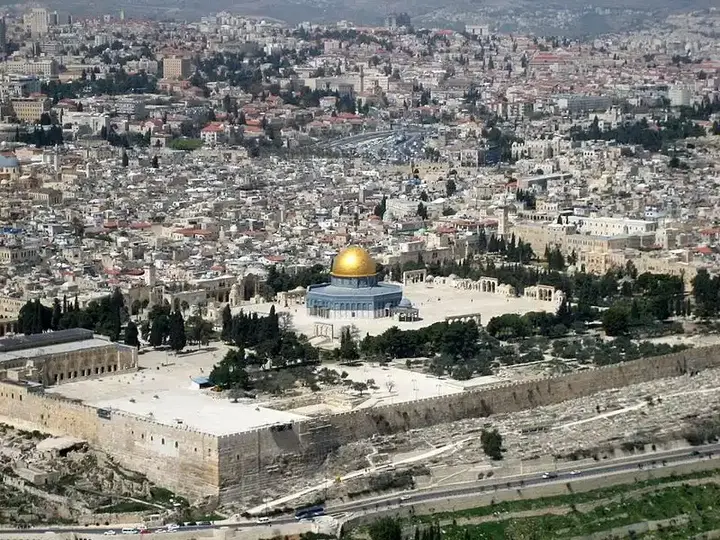
When we talk about Old Jerusalem, we are talking about a city that is not just a place, but a journey through history and time. Located in the heart of Palestine, this ancient city is the hub of many civilizations and religions that have left their mark on its walls and alleys. Jerusalem is the cradle of the three monotheistic religions – Judaism, Christianity and Islam – and every corner of it tells a story of faith, conflict and tolerance.
Show key points
- The Old City of Jerusalem stands as a living chronicle of human history, where successive civilizations have left lasting imprints on its architecture, culture, and spiritual identity.
- As the cradle of the three major monotheistic religions—Judaism, Christianity, and Islam—Jerusalem serves as a sacred space revered by millions across the world.
- The city is divided into four distinct quarters: Muslim, Jewish, Christian, and Armenian, each maintaining its cultural uniqueness and historical significance.
- ADVERTISEMENT
- Landmark sites such as the Western Wall, Church of the Holy Sepulchre, and Al-Aqsa Mosque continue to function as places of active worship and global pilgrimage.
- Over the centuries, Jerusalem has passed through the hands of a wide range of powers, including the Egyptians, Greeks, Romans, Muslims, Crusaders, Ottomans, and finally the British.
- This prolonged sequence of historical dominions not only shaped the city's urban and religious landscape but also contributed to its rich tapestry of languages, traditions, and beliefs.
- More than a museum of the past, the Old City remains a vibrant cultural and religious hub, where history is continuously celebrated, experienced, and preserved.
Today's Old Jerusalem is a blend of old and new, where residents and visitors live in the shadows of historical monuments that reflect the succession of civilizations throughout the ages. It is a city full of historical and religious monuments, from the Western Wall to the Church of the Holy Sepulchre, from the Al-Aqsa Mosque to the narrow alleys teeming with life and activity. In this article, we will take you on a tour through the history of Jerusalem and throughout its Old City, neighborhoods and walls.
Recommend
The ancient history of Jerusalem
Historical origins of the Old City
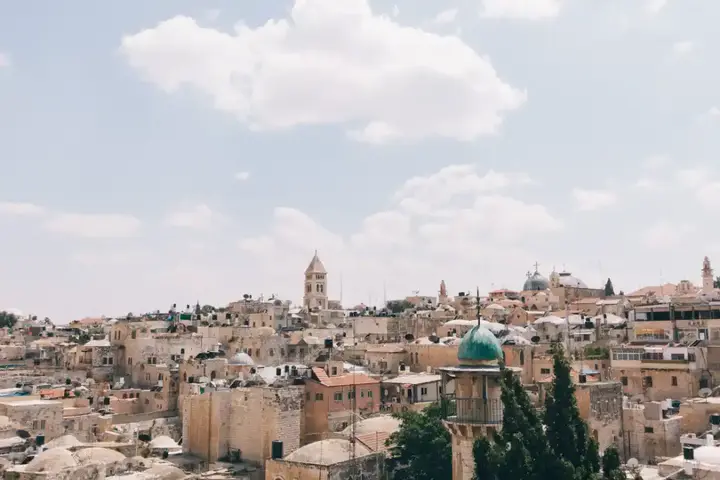
Jerusalem is one of the oldest cities in the world, with thousands of years of history. The Old City, with its ancient walls and historic buildings, is a testament to the civilizations that the city has gone through. Jerusalem was founded in the fourth millennium BC and, since then, has been the center of many important historical events.
Initially, Jerusalem was a Canaanite city, and then became a center of Jebusite worship. During later times, Jerusalem was dominated by Persians, Romans and Muslims, each of whom added to its cultural and religious fabric.
The Old City of Jerusalem contains important archaeological sites dating back to these periods, such as the Western Wall, the Church of the Holy Sepulchre, and the Al-Aqsa Mosque. These sites are still used for worship and attract visitors from all over the world, making the Old City a living center of religions and cultures.
The Old City of Jerusalem: A Witness to History
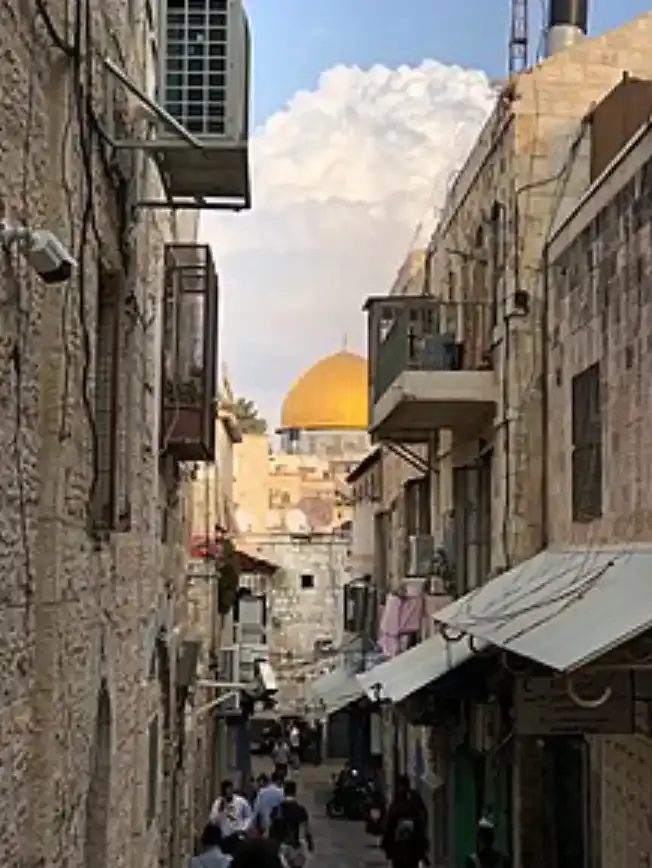
The neighborhoods of the Old City of Jerusalem form a mosaic that expresses the cultural and religious diversity that characterized the city's history. The Old City is divided into four main neighborhoods: the Muslim Quarter, the Jewish Quarter, the Christian Quarter, and the Armenian Quarter. Each neighborhood retains its own character and reflects the unique identity of the community in which it lives.
The Muslim Quarter is the largest of the four neighborhoods and includes many mosques and madrasas, including the Al-Aqsa Mosque and the Dome of the Rock. The ghetto contains the Western Wall, also known as the Western Wall, which is the holiest prayer site in Judaism. The Christian Quarter includes the Church of the Holy Sepulchre, the site where Jesus is believed to have been buried and raised. Finally, the Armenian Quarter, which is one of the oldest neighborhoods in the Old City and preserves the ancient traditions of Armenians.
These neighborhoods are not just historical sites, they are living centers of worship and culture. The visitor can feel the pulse of life in the bustling markets, enjoy traditional foods, and witness the religious traditions practiced daily. The Old City of Jerusalem is a living testament to the city's ancient history and continues to write new chapters in the story of Jerusalem.
Old City
Life within the walls of the Old City of Jerusalem
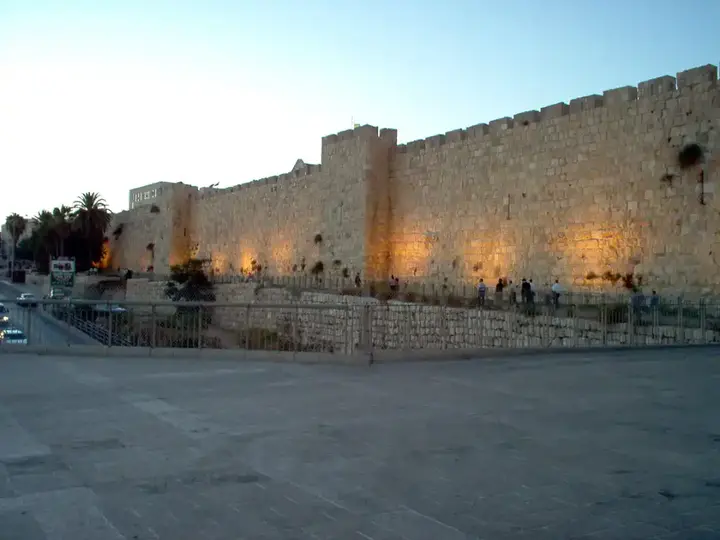
One of its most prominent historical landmarks is the walls that surround the Old City of Jerusalem, telling the story of a city that has been the focus of the world's attention through the ages. Built in Ottoman times and restored over the years, these walls today form the boundaries of the Old City, which includes many neighborhoods and religious monuments.
Within these walls, every corner comes to life, where religions and cultures come together in a unique harmony. Arab souks crowded with vendors and buyers, the loud sounds of minarets and churches, and the pleasant aromas of traditional food all contribute to creating an unforgettable atmosphere.
Visitors can witness the ancient traditions still practiced in the four neighborhoods, from praying at Al-Aqsa Mosque to visiting the Dome of the Rock, from participating in masses at the Church of the Holy Sepulchre to visiting Armenian monasteries. All these activities reflect the spiritual and cultural significance of the Old Town and make it a place worth visiting and exploring.
Religious and cultural significance of the Old City
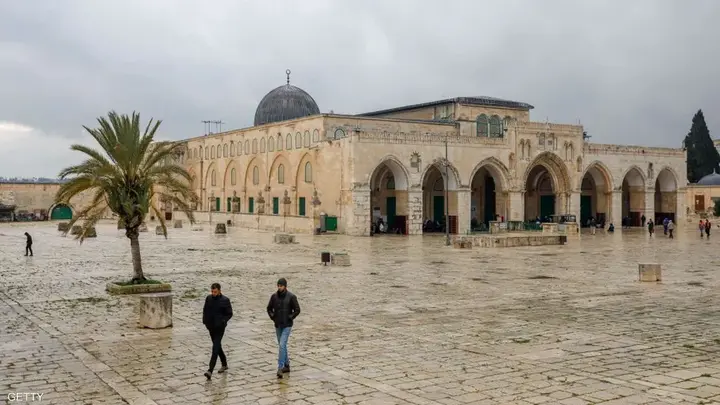
The Old City of Jerusalem is a center of religious and cultural heritage not only for the city's residents, but for the whole world. This walled area is home to some of the most important religious monuments that are especially sacred to followers of the three monotheistic religions.
The Western Wall, known as the Western Wall, is a holy site for Muslims and Jews and attracts visitors from all over the world to pray and apply. The Church of the Holy Sepulchre, located in the Christian Quarter, is considered one of the holiest places in Christianity and is believed to contain the empty tomb from which Jesus rose. Al-Aqsa Mosque, located in the Muslim Quarter, is the third holy shrine in Islam and an important site for prayer and worship.
In addition to religious significance, the Old City has great cultural significance. It is home to traditional markets, museums and art galleries showcasing handicrafts and arts that reflect the city's cultural diversity. Cultural events and festivals held in the Old City contribute to the revival of heritage and promote cultural exchange between visitors and locals.
The Old City of Jerusalem is not just a historical site, it is a vibrant place, where religious and cultural significance is embodied in each of its stones, and continues to be a witness to history and a source of inspiration for future generations.
Successive civilizations on Jerusalem
Historical eras that shaped Old Jerusalem
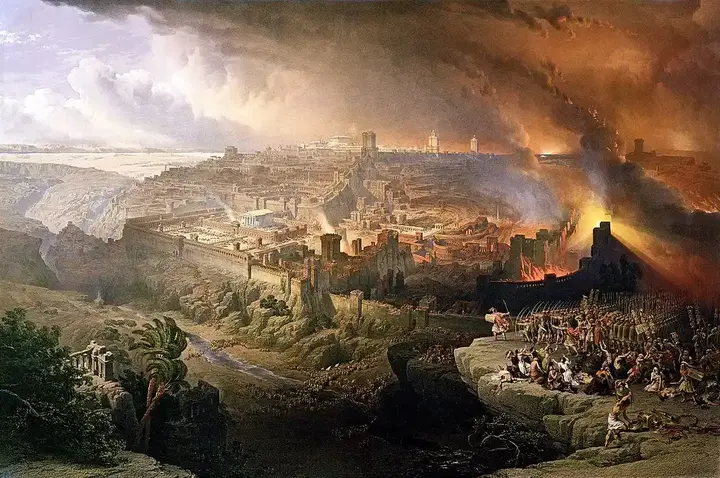
Throughout the ages, the Old City of Jerusalem has witnessed the succession of many civilizations that have not only left their structural and artistic traces, but also influenced the social and cultural fabric of the city. From the early Canaanites to the Jebusites who built the first walls around the city, from the Hebrews to the Romans, every civilization made its own unique contributions.
In the Middle Ages, Jerusalem became the center of the Crusader conflicts, with Christians and Muslims exchanging control over it, leading to major changes in its urban and religious composition. The Ottoman era saw the restoration of walls and the addition of many Islamic monuments that still stand today.
All these civilizations have left their mark not only in buildings and monuments, but also in the customs, traditions and languages that shape the identity of Old Jerusalem. Today, Jerusalem is a site of cultural and religious cross-fertilization, and it remains a witness to the civilizations it has passed through that have contributed to making it one of the most distinguished cities in the world.
1. Pharaonic era
From the sixteenth to fourteenth centuries BC, Jerusalem came under Egyptian control. During the rule of Pharaoh Akhenaten, the city faced attacks from the Khabiro tribes, nomadic groups. Abdi Khaiba, the Egyptian ruler of the city, was unable to repel these attacks, and Jerusalem remained under the control of the Khabiru until Egypt regained influence in the region during the reign of Pharaoh Seti I, who ruled from 1317 to 1301 BC.
2. The Age of David (peace be upon him)
During a period of more than five thousand years of its history, Jerusalem witnessed the reign of King David that lasted for 73 years. Around 977 or 1000 BC, King David established control of the city, declaring it the "City of David," where he built a palace and a number of fortresses, and ruled for 40 years. After his death, his son Suleiman took the throne and led the city for 33 years.
3. Greek era
In 333 BC, Alexander the Great annexed Jerusalem to his vast empire that included all of Palestine. After his departure, his Macedonian and Ptolemaic successors took over, who managed the affairs of the city. In the same year Alexander died, Ptolemy annexed Jerusalem and Palestine to his Egyptian kingdom in 323 BC. Nearly a century later, in 198 BC, sovereignty passed to the Syrian Seleucids led by Celelux Nicator, during which time Jerusalemites were imbued with a rich Hellenistic culture.
4. Jerusalem under Roman rule
In 63 BC, the Roman general Pompeii brought Jerusalem under Roman control, incorporating it within the borders of the empire. Over the following centuries until 636 CE, Jerusalem under Roman rule witnessed many momentous events.
Between 66 and 70 AD, Jewish unrest and rebellions broke out and were severely suppressed by the Roman commander Titus, who ordered the city to be burned and many of its Jewish inhabitants captured, returning to a kind of stability under Roman authority.
In 115 and 132 CE, Jerusalem experienced new Jewish rebellions that temporarily succeeded in taking control of the city, but were violently suppressed by the Roman Emperor Hadrian, destroying Jerusalem again. After that, the Jews were forced to leave the city, leaving only the Christians. Hadrian ordered the name of Jerusalem to be changed to "Elijah" and banned Jews from residing there.
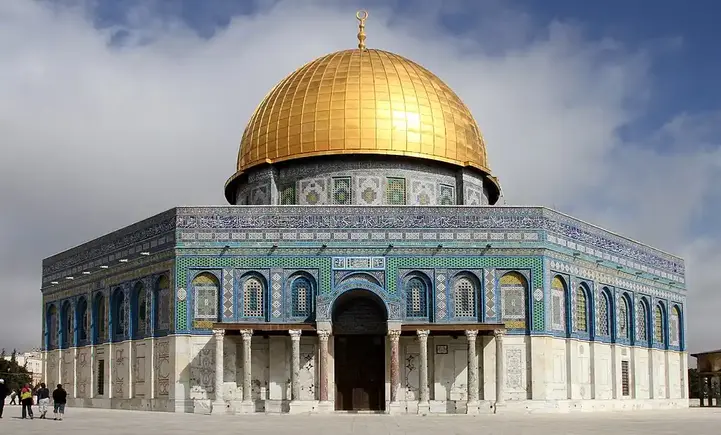
5. The First Islamic Era
In the fifteenth year of the Hijra, corresponding to the year 636 or 638 AD, according to various accounts, the caliph Omar ibn al-Khattab took over Jerusalem after its conquest by the Islamic leader Abu Ubaidah ibn al-Jarrah.
Patriarch Sophronius stipulated that the city be handed over to Omar personally, and then the "Omari Covenant" was concluded, which guaranteed religious freedoms in exchange for paying tribute. The name of the city was changed from Elijah to Jerusalem, with the condition that Jews do not reside there.
Since then, Jerusalem has acquired its Islamic identity, receiving special attention from the Umayyads and Abbasids, who ruled from 661 to 750 AD and 750 to 878 CE respectively, and has undergone remarkable scientific development.
The Dome of the Rock, erected by Abd al-Malik ibn Marwan between 682 and 691 AD, and the reconstruction of the Al-Aqsa Mosque in 709 AD, are among the most prominent Islamic landmarks of this era. Over time, Jerusalem went through periods of instability as a result of conflicts between the Abbasids, Fatimids, and Qarmatians, and came under Seljuk rule in 1071 CE.
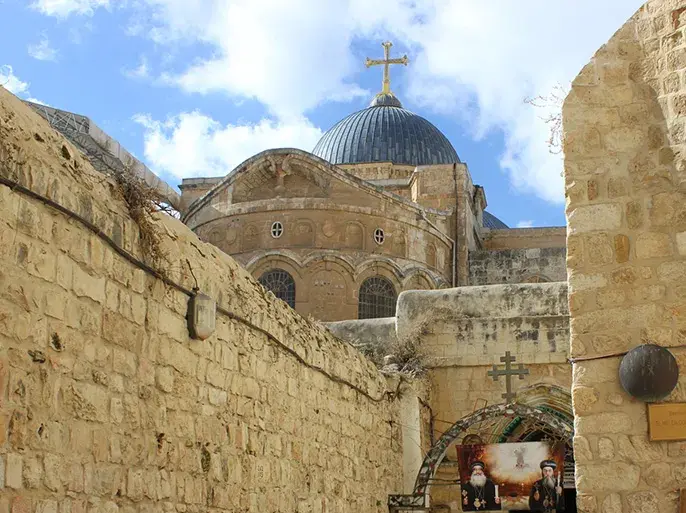
6. Crusades
In 1099, the Crusaders seized Jerusalem after a five-century Islamic rule, against the backdrop of internal conflicts between the Seljuks and the Fatimids, as well as conflicts between the Seljuks themselves.
As they entered the city, the Crusaders killed some 70,000 Muslims and committed violations of sanctities. Since then, a Latin kingdom led by a Catholic king has been established in Jerusalem, who imposed Catholic rites on the Orthodox Christian population, to their dismay.
7. The Ottomans
After Sultan Selim I's victory at the Battle of Marj Dabiq between 1515 and 1516, Ottoman forces entered Palestine, and Jerusalem became part of the Ottoman Empire.
Later, Sultan Suleiman the Magnificent rebuilt the city walls and renovated the Dome of the Rock. From 1831 to 1840, Palestine joined the Egyptian state under Muhammad Ali Pasha, before returning under Ottoman sovereignty.
In 1880, the Ottoman Empire established the Jerusalem Mutasarrifiya, and in 1898, part of the old wall of the city was removed to make way for the visit of the German Kaiser Wilhelm II. Ottoman rule of Jerusalem lasted until the end of World War I, when the Ottomans were defeated and withdrew from Palestine.
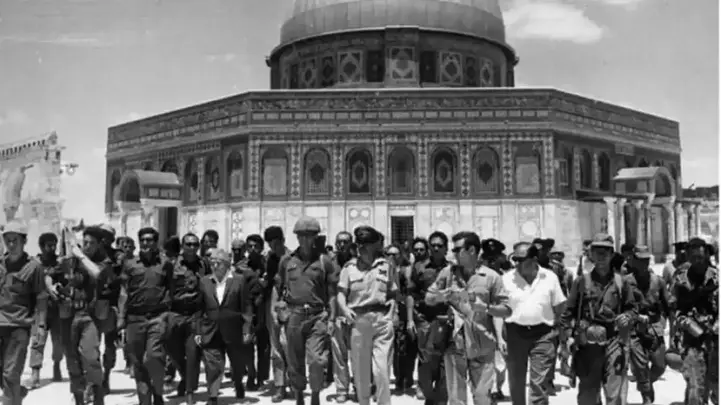
8. British occupation
In the early days of December 1917, the British army was able to take control of Jerusalem, following a declaration by British General Allenby.
In the aftermath, the League of Nations approved the British Mandate for Palestine, making Jerusalem the administrative capital of Palestine from 1920 to 1948. This era underwent major transformations, most notably the increasing flow of Jewish immigrants into the city, which was particularly strengthened after the Balfour Declaration was issued in 1917.
Mutual cultural and religious influences
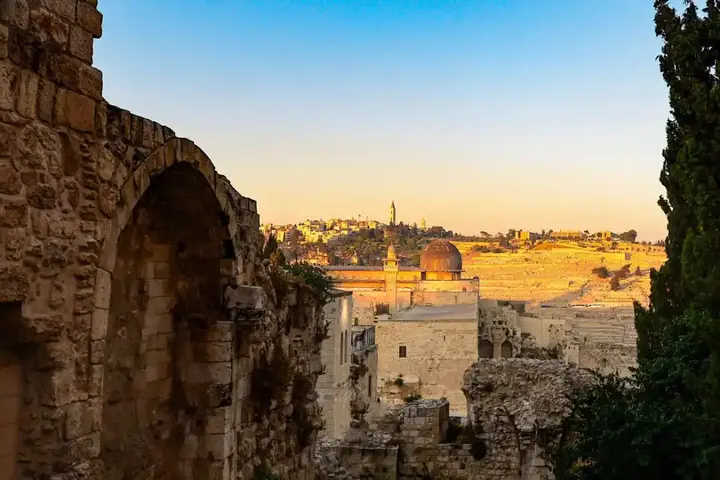
The Old City of Jerusalem is a vivid example of the interaction and mutual influence between the different civilizations that have settled or ruled it throughout history. These civilizations not only added new landmarks to the city, but also influenced its traditions, customs, and religious beliefs.
From the Romans who introduced monumental architecture and theaters, to the Arabs who enriched the city with Islamic art and science, to the Ottomans who added markets and baths, every civilization left its mark clearly. The Crusaders also influenced Jerusalem by introducing Gothic architecture and strengthening trade links with Europe.
Religious influences were also evident, as the three monotheistic religions shared sacred sites and were influenced by each other in rituals and worship.







